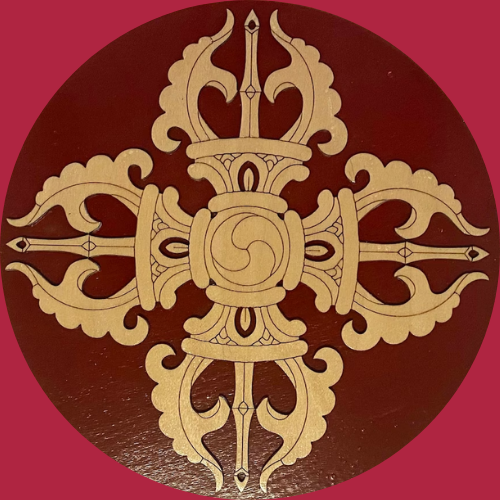Shrines in Vietnam
Thien Mu Pagoda
Inside Central Vietnam, almost close to the imperial city of Hue, Thien Mu Pagoda is on Ha Khe Hill, it is on the left bank of the Perfume River in Huong Long Village. It is almost five km outside from the center of Hue, which means “Heavenly Lady.” Legend explains that an elderly woman told the locals that a Lord from Nguyen Dynasty would make a Buddhist pagoda on Ha Khe Hill. Lord Nguyen Hoang made the pagoda in 1601, naming it after that elderly woman. At the end of this pagoda is a burial ground for monks. To this day, it remains an active institution of monks where they study and lead life.
Travel tips for Thien Mu Pagoda
n the dry season, a boat for Thien Mu from center is a great plan. Thien Mu Pagoda is a relevant spot for exploration. Cities like Danang and Hoi are great summer holiday destinations in Vietnam. You’ll cover a whole ground area of the pagoda in thirty mins. The easiest way is to hail a taxi from Hue. Reach there on a boat from Toa Kham.
Location: Kim Long, Hương Long, Tp. Huế, Thừa Thiên Huế
Hours: Sunrise to sunset
My Son Ruins
A UNESCO Heritage site, My Son Ruin is a cluster of Hindu temples constructed around 4 th and 14 th centuries. Abandoned and unused from ages, the site is void of active worshippers.
Travel tips for My Son Ruins
Due to war, many historic temples got partially destroyed and are restored. There are great views of mountains in this area. It takes only few hours to have a tour of the whole site. It is worth getting here early in the morning. The crowd gathers in the afternoon and the heat gets overwhelming as there is less shaded areas inside the temple ruins of My Son. Located outside of Hoi An and Da Nang, My Son ruins are only 1-2 hrs from some of the major destinations within Central Vietnam.
Location: Mỹ Sơn, Duy Phú, Duy Xuyên, Quảng Nam
Price: 100,000 VND
Hours: Sunrise to sunset
Quan Cong Temple
The Quan Cong Temple was established in 1653 as remembrance for a Chinese general. The architecture is Chinese, a type practiced throughout Hoi An.
Travel tips for Quan Cong Temple
From Danang, it’s about a 30-40 minutes taxi ride or a return trip on a shared limousine bus for 140,000 VND. If you’re already in Hoi An, the Quan Cong is at a few distance from Hoi An, an old town, so it is not too troublesome to get there. Quan Cong is a bit crowded, purchase a ticket for entry. Depending on weather, you can bring water, sunscreen, and a hat. Get appropriate attire to enter inside Quan Cong .
Location: 24 Tran Phu, Hoi An, Vietnam
Price: A ticket to the Old Town
Hours: 08:00 – 17:00, Daily
Bao Quoc Temple
It has a monk training center, that is operational since 1940. The pagoda was founded in 1670. It has a triple -gated entrance, which kept its charm despite a few renovations, courtyard also has balconies & stupas.
Travel tips for Bao Quoc Temple
Bao Quoc is on Ham Long Hill, just a kilometer from Hue, on a street that bears the same name, in the south side of the Perfume River.
Location: Lich Doi, Hue, Vietnam
Hours: From sunrise to sunset
Linh Ung Temple
Located on a hill, the Linh Ung watches the sea. The pagoda is protecting the people & its city. Its ground is filled with foliage. Her symbolism represents compassion and motherliness in Vietnamese tradition.
Travel tips for the Linh Ung Temple
View is stunning, especially at sunrise and sunset. You will get a view of Da Nang and the ocean. Located close to city center, it’s not too challenging to catch an early morning glimpse of the area.
Location: 574D Ong Ich Khiem, Da Nang, Vietnam
Hours: From sunrise to sunset
Tu Hieu Pagoda
In 1843, Tu Hieu was built, that now hosts monks. Hear their chanting daily at set intervals, starting at 0430 in the morning until 1900 in the evening. Set in a garden and pine forest, this pagoda is a zen-like getaway recognized globally for hosting Thich Nhat Hanh, one of the leading voices of international Buddhism. He entered the pagoda as a resident monk, in 1960s, he became one of the most active Buddhist influencers.
Travel tips for Tu Hieu Pagoda
Only at 5 km from Hue, it’s easily accessible for explorers who like its historical significance and zen-like atmosphere, Tu Hieu Pagoda is one of our favorite sites to check out inside Central Vietnam.
Location: Thua Xuan, Hue, Vietnam
Hours: From sunrise to sunset
